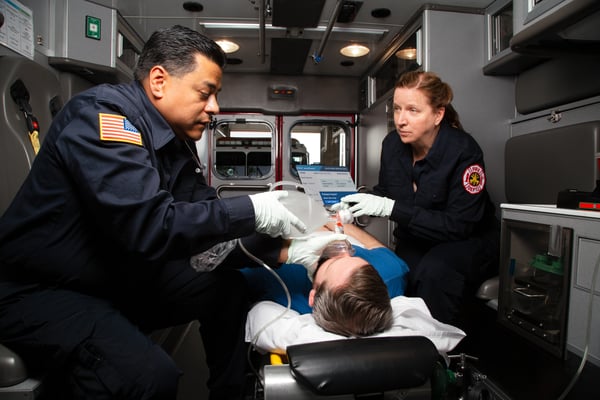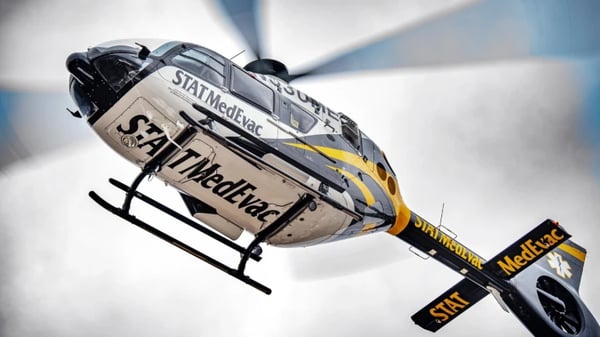News Alert: New ePCR Integration Simplifies EMS Data Management and Enables Better Care Coordination
Why is EMS Documentation the Dreaded Part of the Job?
You’re at your station, just getting ready to sit down on the recliner and kick your feet up when the tones drop “Medic 4, respond to a Motor Vehicle Collision
Was this information valuable?

You’re at your station, just getting ready to sit down on the recliner and kick your feet up when the tones drop “Medic 4, respond to a Motor Vehicle Collision.” On the way, you are provided with updates about the call: two vehicles involved, one trauma alert. You’re the second unit to arrive on scene, and you see your coworkers loading up the trauma alert. You approach the other patient, who was the driver of the other vehicle. As you begin talking with them, you notice a strong odor that you assume is alcohol, and the patient is nervous and slurring their words.
If you’ve been in EMS for a while, you’ve probably run a similar call to the one described above. What’s going through your head as you start to realize what the situation is? If you’re like most of us, you’re thinking that you better document this call well because it’s definitely going to court. You might even begin to think about how long this report is going to take you to write. You also want to make sure that you rule out medical causes for the patient’s current condition; we’ve all heard that ketones smell like alcohol, so check that blood glucose. We also like to avoid any accusatory statements, and we even use code words so the patient doesn’t know what we are thinking “EtOH” and “Signal 2.”
Why are We So Concerned About the Quality of Documentation?
In short, experience. Our mentors’ experiences, our partners’ experiences and our own experience. We tend to teach each other through experiences we have had on the job. We might look at a partner and tell them, they better “CYA” that call; meaning that they have to put a little extra effort into the documentation because of the type of call it was. The case above is certainly one of those calls that we would put the extra effort into documenting well. Anytime a potential crime was committed and results in serious injury or death, you know your patient care report (PCR) is going to be read by several different people.
Part of our concern, is this feeling like someone will discover something we did wrong. It’s a secret insecurity that paramedics tend to have, but no one ever talks about; we don’t want to look stupid. We certainly don’t like it when our treatment strategy is questioned, and we don’t want to have to defend it on the stand. Are they valid concerns? Yes, of course. It is much more in your favor to be slightly over-worried about your documentation, than to be lackadaisical and careless. EMTs and paramedics tend to function well when they are uncomfortable. The heightened sense of awareness dulls complacency and forces us to be at the top of our game.
What Role Does Documentation Play in Patient Outcomes?
It has been proven that there is actually a correlation between patient outcomes and quality of documentation. A study on trauma patients actually showed that, when EMS personnel failed to document key values, there was an increased chance of the patient having an undesirable outcome. This is correlation, not causation of course. The study didn’t say that poor documentation causes patients to die, but the correlation is interesting nonetheless. Perhaps the same types of paramedics that document poorly, tend to lack practical skills as well. Or, perhaps the next level of care was delayed because the hospital staff didn’t discover a critical value that might have been noticed had it been documented by EMS. Whatever the case, this is just one more reason to provide thorough documentation.
Good charting reflects appropriate clinical care; “if you didn’t document it, it didn’t happen.” You never know what kinds of questions will be asked after a call, and you don’t want to have to fill in the gaps with information that wasn’t on the PCR. There are dozens of court cases where better documentation could have saved the careers of healthcare providers.
Additional Benefits of Collecting the Right Data
It’s also beneficial to complete your reports accurately because they are loaded with data. The data from EMS run reports is being mined all around the world, and that data is used at every level to improve our industry. We can perform Quality Assurance within our own EMS agencies, and show trends among providers, shifts, districts or call types. This can help identify areas that need improvement, system failures or gross negligence. Many agencies actually guide their training based on the data that they pull from their documentation software. Several state agencies now compile data as well, and it is done nationally through NEMSIS. This mass storage of EMS data helps identify specific components of high functioning agencies.
There is also a financial incentive to recording accurate data on the PCR. The better you document, the better the chances of the billing agency collecting on the run. Yes I know, we don’t like to concern ourselves with billing, but it’s a necessary evil and without it many of us wouldn’t get paid.
Finally, we should be concerned with documenting well because it’s the law. That’s right, that PCR is a legal document and we are bound by law to assure its accuracy and completeness.
3 Components of Good Documentation
Good prehospital documentation should include each of the following three components. It should be accurate, legally defensible and complete.
1. Accuracy is important because it helps our documentation maintain integrity. Additionally, we want to display clinical and operational competency. It is imperative that we report all times, dosages, and skills accurately. This even includes clinical misadventures or failed attempts. It may be difficult to log a failure into a PCR, but it is certainly much more difficult to explain why you omitted critical information.
2. A chart should be legally defensible. This is done by assuring that you follow all departmental protocols and/or standard operating procedures. If an attorney can show disparity between what you documented that you did, and what your department says you should do, they will. This approach is often used to defend DUI cases, where the defense attorney states that the defendant was not appropriately assessed and treated by the EMS crew. Additionally, make sure to avoid unapproved abbreviations, acronyms, or slang. Try to avoid redundancy as well, as they can lead to unexpected errors. One error in a PCR can bring the whole document’s integrity into question.
3. A complete PCR is very important. Try not to leave sections blank or unchecked. Modern reporting includes several different data collection points, which can make charting tedious work. Try to remain diligent when completing your documentation, and make sure the chart passes all validations before marking it complete.
In summary, the dreaded task of performing EMS documentation is universally feared and loathed across the industry. While our concerns are valid, it isn’t difficult to consistently produce good documentation. Always remember to keep your charting accurate, legally defensible, and complete.
Related Posts
How STAT MedEvac Connected Device, Software, and Data Technology To Enhance QA and Elevate Care
Podcast: 4 Ways ePCR Software Can Relieve EMS’ Biggest Headaches
ZOLL Pulse Blog
Subscribe to our blog and receive quality content that makes your job as an EMS & fire, hospital, or AR professional easier.
ZOLL Pulse Blog
Subscribe to our blog and receive quality content that makes your job as an EMS, fire, hospital, or AR professional easier.





